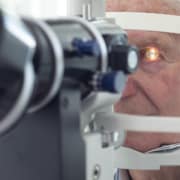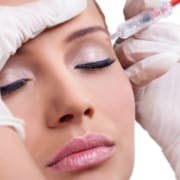Ingredients to Look For in Eye Cream

Retinol
Derived from Vitamin A, Retinol helps with cell turnover and collagen production— helping you to get rid of fine lines and wrinkles, sun damage, and dryness. When using any creams that contain retinol, make sure to limit your sun exposure because it can make your skin increasingly sensitive and prone to sunburns. Additionally, not every patient is a good candidate for using retinol based eye creams because they can make your eyes water, itch, or burn. If you notice any of these symptoms, stop using the eye cream immediately and consider scheduling an eye appointment with Dr. Jeffrey Maehara.
Vitamin E
As previously mentioned, the skin around and under your eyes are very sensitive. When choosing an eye cream to support this skin, look for one that contains Vitamin E. As a naturally derived substance, Vitamin E works to soothe and soften the skin around your eyes. So, if you are feeling a bit more tired or if you are experiencing dryness, consider Vitamin E to be your best friend.
Hyaluronic Acids
If your number one goal in using an eye cream is to protect and get rid of fine lines and wrinkles, make sure that you use one that has hyaluronic acids in it. As an all-natural chemical found in your body, hyaluronic acids are a safe way to speed up your body’s production of collagen.
Having good eyesight should be your number one concern when it comes to your eyes, but the skin around them should be your second. By using an eye cream that contains the ingredients listed above, you can have smoother, younger looking skin. To learn more about your eye and vision health, contact Dr. Jeffrey Maehara’s office today!







 The New Year is all about reinventing yourself and setting goals that you hope to achieve. As one way to reinvent yourself, many people like to make cosmetic changes to their appearance by lightening their hair color or wearing colored contact lenses. As a fun way to change up your eye color, colored contact lenses are popular amongst every age group. However, did you know that colored contact lenses can cause blindness or eye injuries like ulcers? Read on to learn more.
The New Year is all about reinventing yourself and setting goals that you hope to achieve. As one way to reinvent yourself, many people like to make cosmetic changes to their appearance by lightening their hair color or wearing colored contact lenses. As a fun way to change up your eye color, colored contact lenses are popular amongst every age group. However, did you know that colored contact lenses can cause blindness or eye injuries like ulcers? Read on to learn more.
 With the holidays in full swing, if you haven’t yet started your holiday shopping, you need to jump on it so that you can get everyone in your life something that they will love and remember. As one of the hardest people to shop for, make sure that you get your spouse something they will thank you for and not hold over your head during your next big argument. Luckily, Dr. Jeffrey Maehara’s office has several unique gifts that you can give to your spouse that they will praise you for.
With the holidays in full swing, if you haven’t yet started your holiday shopping, you need to jump on it so that you can get everyone in your life something that they will love and remember. As one of the hardest people to shop for, make sure that you get your spouse something they will thank you for and not hold over your head during your next big argument. Luckily, Dr. Jeffrey Maehara’s office has several unique gifts that you can give to your spouse that they will praise you for.


 Unfortunately, as much as we hope and pray for a magic pill or spell that will make us never age, doctors are still working on it. As one of the biggest signs of aging, your vision will start to decline and you will likely start to need a pair of reading glasses to read the labels at the grocery store. Additionally, the lines around your eyes will start to deepen and you may start to understand the true meaning of crows feet. However, Dr. Jeffrey Maehara specializes in several treatment options that can help you to take care of your vision and the wrinkles around your eyes with Lasik and Botox. Read on to learn more.
Unfortunately, as much as we hope and pray for a magic pill or spell that will make us never age, doctors are still working on it. As one of the biggest signs of aging, your vision will start to decline and you will likely start to need a pair of reading glasses to read the labels at the grocery store. Additionally, the lines around your eyes will start to deepen and you may start to understand the true meaning of crows feet. However, Dr. Jeffrey Maehara specializes in several treatment options that can help you to take care of your vision and the wrinkles around your eyes with Lasik and Botox. Read on to learn more.


 Taking care of glasses as an adult can sometimes be a bit iffy, however, getting your child to take care of their glasses is a whole other process. As your child gets used to not only getting into the habit of wearing their glasses everyday, your child also needs to get into the habit of taking care of their eyeglasses everyday. From placing them in their proper case to taking precautions before taking sports, this article will discuss a few of the ways you can teach your child to care for their glasses.
Taking care of glasses as an adult can sometimes be a bit iffy, however, getting your child to take care of their glasses is a whole other process. As your child gets used to not only getting into the habit of wearing their glasses everyday, your child also needs to get into the habit of taking care of their eyeglasses everyday. From placing them in their proper case to taking precautions before taking sports, this article will discuss a few of the ways you can teach your child to care for their glasses.
